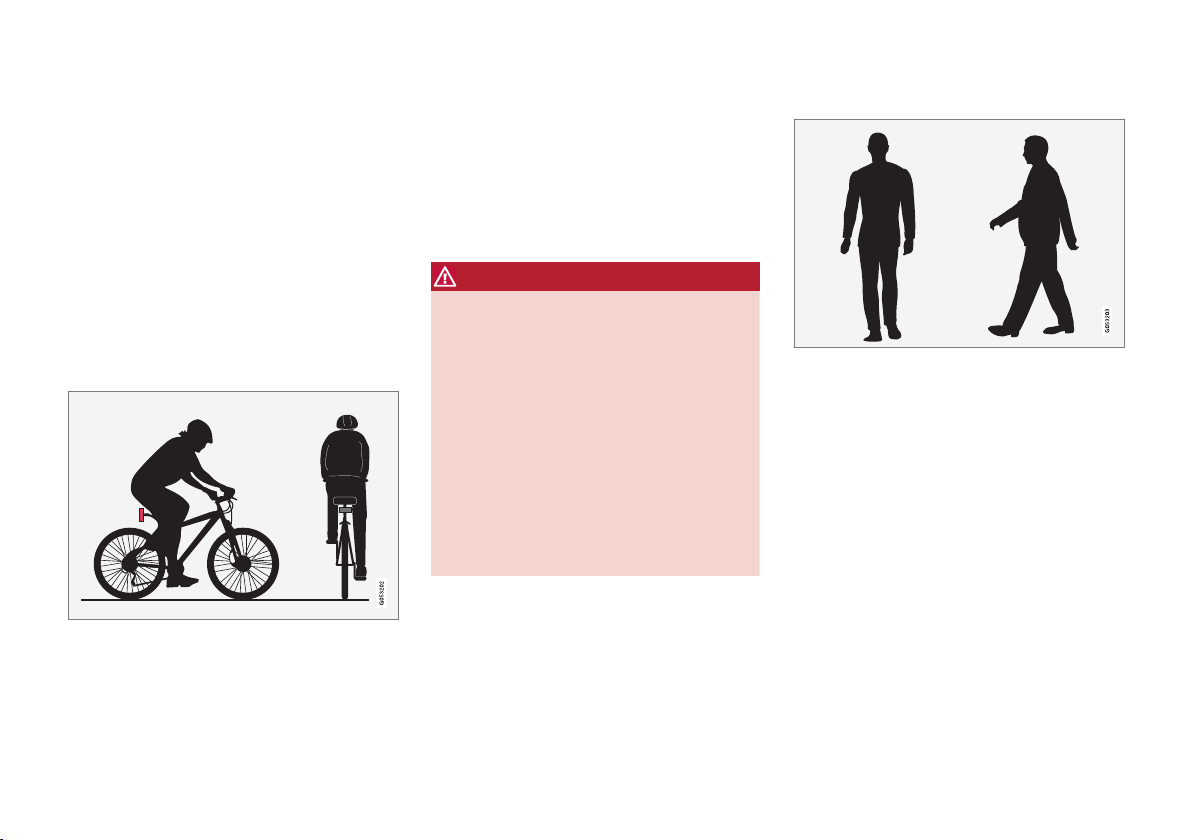Loading ...
Loading ...
Loading ...

DRIVER SUPPORT
}}
313
Detecting obstructions with City
Safety
City Safety can detect vehicles, cyclists, large
animals and pedestrians.
Vehicles
City Safety detects most types of vehicles that
are either stationary, moving in the same direc-
tion as your vehicle or those described in the arti-
cle "City Safety in crossing traffic."
In order for City Safety to detect a vehicle in
darkness, its headlights and taillights must be on
and clearly visible.
Cyclists
Optimal example of what the system considers to be a
cyclist: clear body/bike contours
To help function optimally, City Safety's function
for cyclist detection needs clear information
about the bike itself and the rider's head, arms,
shoulders, legs, the upper and lower parts of the
body and a cyclist's normal pattern of movement.
•
If major parts of the cyclist's body are not
visible to the camera, the system cannot
detect the cyclist.
•
The cyclist must be an adult riding a bike
intended for an adult.
WARNING
City Safety is designed to be a supplementary
driving aid and cannot detect all cyclists in all
situations, such as:
•
a partially obscured cyclist.
•
in situations where the contrast between
the cyclist and the background is poor;
this may result in late braking or no brak-
ing at all
•
a cyclist whose clothing prevents a clear
view of the person's body contours.
•
a cyclist transporting a large object.
The driver is always responsible for operating
the vehicle in a safe manner.
Pedestrians
Optimal example of what the system considers to be a
pedestrian: clear body contours
To help function optimally, City Safety's function
for pedestrian detection needs clear information
about the person's head, arms, shoulders, legs,
the upper and lower parts of the body and a per-
son's normal pattern of movement.
In order to detect a pedestrian, there must be a
contrast to the background. If there is little con-
trast, the person may be detected late or not at
all, which may result in a late or no reaction from
the system.
•
If major parts of the pedestrian's body are
not visible to the camera, he/she may not be
detected.
•
In order to detect a pedestrian, the system
must have a full view of the person's entire
Loading ...
Loading ...
Loading ...